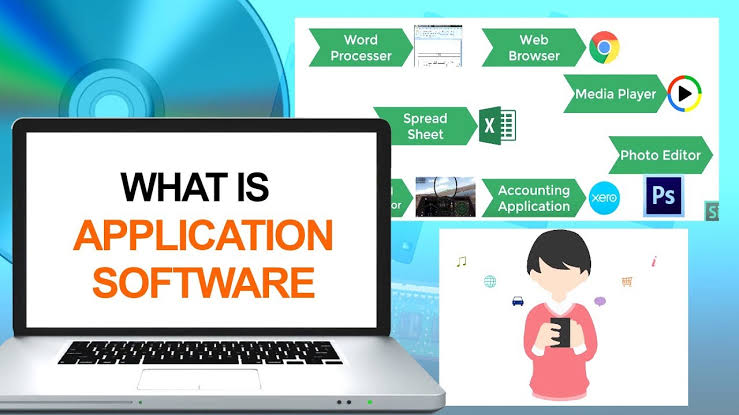The Latest Software Applications and Digital Tools Are Helping to Reinvent the Classroom

New technology has always played an important role in the classroom. The latest software applications and other digital tools are having a major impact on the classroom. From making it easier for teachers and students to communicate and share information to organizational and resource-management solutions, the hottest new software development trends will shake up educators, and play a major role in helping to create the classrooms of tomorrow.
Table of Contents
Sharing Information Digitally
The dissemination and sharing of information is the very heart of education technology. The limitations of conventional technologies and even digital applications are often considerable. Tools like machine learning, data analytics and even virtual and augmented realities all have the potential to allow information to be shared more easily and effectively than ever before.
Removing the obstacles, bottlenecks and other limiting factors that may be impairing communication helps to ensure that students and educators are able to communicate new ideas and concepts with greater ease.
Enhanced Communication
Clear, concise and effective communication is of paramount importance to students who are seeking to learn new ideas or master a subject. Just as poor communication may come to impede productivity and profitability within the world of business, an inability to communicate effectively can leave both teachers and students feeling frustrated and unable to achieve their goals.
From classroom collaboration to distance learning and even programs that focus on independent study, the latest trends in software development will be able to provide the digital tools needed to optimize communication. Messaging tools, a curriculum designed with the aid of data analytic tools and the means to more easily share ideas and exchange information are all potential game changers within the world of education.
Online Courses
Being limited to only the educational and learning opportunities that may be found locally could leave students missing out on quite a lot. The past few years has seen distance-based learning grow from a minor trend to a far more integral part of most professional training and higher-education programs. The technology that allows students to complete a course or master a subject through online study is no longer a resource that can be taken lightly.
The latest trends in education technology like smartphones and other mobile devices beginning to eclipse more traditional desktop and laptop systems or students being given access to digital tools at a younger age indicate that online courses and distance learning are concepts that we can expect to see a lot more of in the days ahead.
Free and Low-Cost Educational Opportunities
The financial cost of an education has long been a major obstacle. Universities that offer free online lectures and courses and e-books that eliminate the need to purchase costly textbooks and other educational materials are just two examples of how technology is being used to reduce educational costs.
Failure to keep costs and expenses from getting out of hand is one of the missteps, pitfalls and mistakes that may doom an educational program to failure. From students who may not be able to afford the rising tuition of a university to educators who are forced to make the most of their limited resources, software and digital applications that can be used to reduce the cost of an education has the potential to make a profound difference.
Superior Versatility
Every student will have a different learning style as well as their own individual needs. Expecting educators to achieve superior results while working within the confines of a program or curriculum that may lack versatility or that cannot be readily adapted to new circumstances is rarely the best way to approach the situation. Software-based programs offer superior agility, allowing them to be altered, augmented or modified with far less time and effort than their conventional counterparts.
From distance learning that allows students to study and learn at their own pace to the applications that ensure educators are able to design, implement and even fine-turn their course or curriculum more effectively, software and application development continues to allow for a more flexible and adaptive learning environment.
Testing and Assessments
While testing has become a less crucial metric for gauging scholastic success in recent years, being able to assess the skills and understanding of a student can still be a matter of great importance. The latest education technology is allowing for students to be tested more quickly, easily and with greater accuracy that would have been possible through established methods.
Educational programs that utilize testing and assessment in order to more effectively determine the level of progress that students are making make it possible to create a more focused and productive course. Testing that can be completed with less time and effort and assessments that can be tabulated and returned without delay are trends that today’s developers and software professionals would do well to consider.
Curriculum Management
Working with a large class or trying to assist multiple students who may all have radically different learning styles, needs and concerns can quickly overwhelm even the most accomplished educators. Software development efforts that are focused on providing teachers and educators with the management tools and solutions they need in order to stay organized and focused are already making a positive impact within the classroom.
Courses and programs where students are expected to do some or even all of their work within a digital format offer educators a golden opportunity to improve their overall level of organization.
Scalable Software
The future of education is a digital one, but the future cannot be expected to arrive overnight. Educational applications and digital software designed to be more readily scaled-up or down in order to keep up with changing needs and evolving demands is a resource that no educator can afford to discount.
Being able to craft the right curriculum, assess the level of impact that past efforts have had or make changes to an established program or course as needed are all concerns that may be more easily addressed by those who have access to the right tools. Scalable classroom environments are a trend that future students and educators can expect to see a lot more of in the days ahead.





